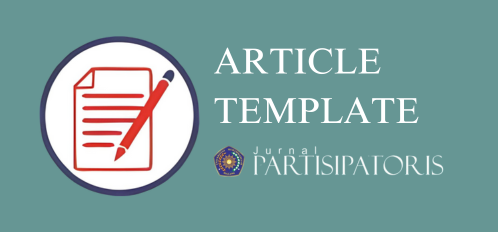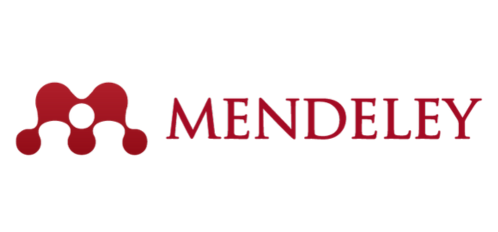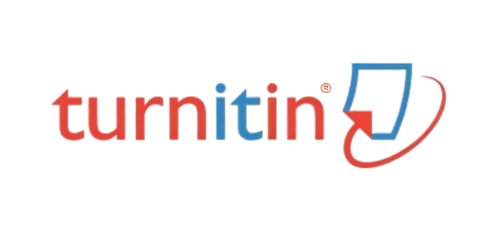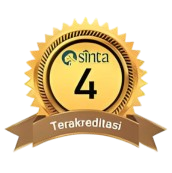Community Empowerment pada Program One Product One RW (OPOR) Di Kota Cimahi
DOI:
https://doi.org/10.22219/jp.v6i2.36457Abstract
The aim of this research is to optimize the community empowerment model in Cimahi City through the One Product One RW (OPR) program after the Covid-19 pandemic. After the Covid-19 pandemic, Cimahi City became one of the cities in West Java Province that was affected by the Covid-19 pandemic. It is hoped that by re-implementing the OPOR program, the community will be more efficient and able to compete to create a prosperous Cimahi City. descriptive research method with a Mixed Method Sequential Explanatory model approach. The data collection and processing process will predominantly use a quantitative approach, supported by an explanation of the qualitative approach. The survey results will be processed using SPSS version 20 and Ms. Excel, while the interview data will be processed using NVivo12. The research results for the implementation quality of the One Product One RW (OPOR) Program in Cimahi City in 2023 are at an implementation quality score of 85. A score of 85 for the implementation quality of the OPOR Program indicates high implementation quality. It can be identified that the highest score is in the dimension of compatibility between the user group and the OPOR implementing organization with an implementation quality score of 86.8. , an indicator with 93% of respondents agreeing that the OPOR Program needs to be evaluated if it is to be continued and an indicator with 88.4% of respondents agreeing that the OPOR Program will be continued. This value shows that more respondents tend to want the OPOR program to be evaluated first before continuing. If the OPOR Program is to be continued, note that there needs to be a grouping of participants based on their business clusters, because the implementation of OPOR in 2023 is considered to combine fashion clusters with food, drink and craft value is unfair in terms of assessment weight.
Downloads
References
Afdaludin, A., & Setiawati, B. (2023). Implementasi Kebijakan Pembangunan Infrastuktur Desa Dengan Alokasi Dana Desa Dalam Pemberdayaan Masyarakat Miskin Di Desa Pakacangan Kecamatan Amuntai Utara Kabupaten Hulu Sungai Utara. JAPB, 6(1), 70–80.
Afrizal, M. A. (2014). Metode penelitian kualitatif. Jakatra: PT Raja Grafindo Persada.
Anufia, B., & Alhamid, T. (2019). Instrumen pengumpulan data.
Endah, K. (2020). Pemberdayaan masyarakat: Menggali potensi lokal desa. Moderat: Jurnal Ilmiah Ilmu Pemerintahan, 6(1), 135–143.
Haris, A. (2014). Memahami Pendekatan Pemberdayaan Masyarakat. Jupiter, 13(2).
Haryono, E. (2023). Metodologi Penelitian Kualitatif Di Perguruan Tinggi Keagamaan Islam. An-Nuur, 13(2).
Hidayat, D. H., & Suhartini, T. (2018). Community Empowerment dan Product Branding “SEKHUIT” Makanan Khas Daerah Lampung. Jurnal Ilmu Komunikasi Efek, 1(2), 138–155.
Kurniasih, D., & Umar, M. (2022). Pengaruh Implementasi Kebijakan Kawasan Perbatasan Indonesia-Malaysia Terhadap Efektivitas Ketahanan Wilayah di Kabupaten Nunukan Provinsi Kalimantan Utara. Jurnal Ketahanan Nasional, 8(1), 1–18.
Lee, Y.-J. (2017). Building resilient cities through community empowerment: principles and strategies for Taiwan. International Review for Spatial Planning and Sustainable Development, 5(2), 35–46.
Malik, A., & Mulyono, S. E. (2017). Pengembangan kewirausahaan berbasis potensi lokal melalui pemberdayaan masyarakat. Journal of Nonformal Education and Community Empowerment, 87–101.
Miles, M. B., & Huberman, A. M. (1994). Qualitative data analysis: An expanded sourcebook. sage.
Nasution, I., & Suriani. (2022). Pengamalan Ajaran Suluk Tarekat Naqsyabandiyah Di Desa Sungai Kumango Kecamatan Tambusai Kabupaten Rokan Hulu. Universitas Islam Negeri Sultan Syarif Kasim Riau.
Novitasari, A. T. (2022). Kontribusi umkm terhadap pertumbuhan ekonomi era digitalisasi melalui peran pemerintah. JABE (Journal of Applied Business and Economic), 9(2), 184–204.
Sartika, I. (2019). Village Resources Based Community Empowerment. International Journal of Kybernology. https://doi.org/10.33701/ijok.v3i1.580
Setiawan, R. I. (2016). Pengembangan sumber daya manusia di bidang pariwisata: perspektif potensi wisata daerah berkembang. Jurnal Penelitian Manajemen Terapan (PENATARAN), 1(1), 23–35.
Siagian, N., Zagoto, D., & Situmorang, I. B. K. (2022). Implikasi Pelaksanaan Reses Anggota DPRD terhadap Daerah Pemilihan di Kabupaten Nias Selatan. JIIP-Jurnal Ilmiah Ilmu Pendidikan, 5(1), 73–87.
Umanailo, M. C. B. (2019). Integration of Community Empowerment Models [Pengintegrasian Model Pemberdayaan Masyarakat]. Proceeding of Community Development, 2, 268–277.
Umar, H. (2003). Metode Penelitian Kuantitatif. Alfabeta, Jakarta.
Downloads
Published
How to Cite
Issue
Section
License

This work is licensed under a Creative Commons Attribution-ShareAlike 4.0 International License.
Authors who publish with Jurnal Partisipatoris agree to the following terms:
- For all articles published in the Jurnal partisipatoris, copyright is retained by the authors. Authors give permission to the publisher to announce the work with conditions. When the manuscript is accepted for publication, the authors agree to the automatic transfer of non-exclusive publishing rights to the publisher.
- Authors retain copyright and grant the journal right of first publication with the work simultaneously licensed under a Creative Commons Attribution-ShareAlike 4.0 International License that allows others to share the work with an acknowledgment of the work's authorship and initial publication in this journal.
- Authors are able to enter into separate, additional contractual arrangements for the non-exclusive distribution of the journal's published version of the work (e.g., post it to an institutional repository or publish it in a book), with an acknowledgment of its initial publication in this journal.
- Authors are permitted and encouraged to post their work online (e.g., in institutional repositories or on their website) prior to and during the submission process, as it can lead to productive exchanges, as well as earlier and greater citation of published work (See The Effect of Open Access).











